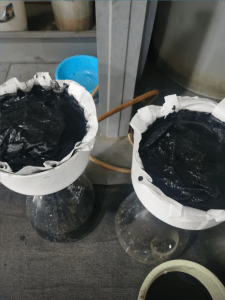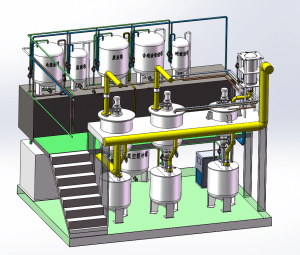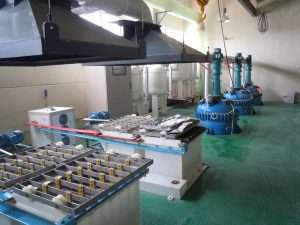Call us now:
There are several methods of copper electrolysis as follows:
Sulfuric acid electrolysis: Using sulfuric acid as the electrolyte, copper ions are oxidized on the copper anode and reduced on the cathode, thereby reducing copper ions to metallic copper. This method is the most widely used copper electrolysis method in industry.
Chlorination electrolysis: Using copper chloride as the electrolyte, hydrogen chloride is added to the electrolytic cell to involve the chloride ions in the electrolysis, thereby reducing copper ions to metallic copper. This method can obtain high purity copper in the production.
Nitric acid electrolysis: Using nitric acid as the electrolyte, copper ions are reduced to metallic copper by oxidizing on the copper anode and reducing on the cathode. This method is suitable for the preparation of high purity copper foil.
Ammonia electrolysis method: Using ammonia as the electrolyte, copper hydroxide or ammonia is added to the electrolytic cell to reduce copper ions to metallic copper. This method is suitable for the preparation of micron-level copper powder.
It should be noted that the composition of the electrolyte and parameters such as temperature and current density should be controlled when electrolyzing copper to obtain the desired purity and form of copper. Also, since harmful gases such as hydrogen and oxygen are generated during the electrolysis process, appropriate measures need to be taken to deal with them.
In addition to the above mentioned copper electrolysis methods, there are some other copper electrolysis methods, such as
Metallic copper electrolysis: Using metallic copper as the anode, it is oxidized in the electrolyte and reduced on the cathode, thus preparing high purity copper foil, etc.
Inorganic salt melt electrolysis method: dissolve copper salt in inorganic salt, make it melt into electrolyte, and electrolyze it at high temperature, thus preparing high purity copper.
Organic solvent electrolysis method: The copper salt is dissolved in an organic solvent and electrolyzed as an electrolyte, thereby preparing high purity copper.
It should be noted that the specific steps and operating conditions of the above methods may vary and need to be explored and practiced in detail in practical applications. Also, the design of the electrolytic cell, the selection of electrode materials, and the control of current need to be paid attention to during copper electrolysis to ensure the stability of the electrolysis process and the quality of copper products.


